Weekly Geekly Rundown for March 7, 2024
I Hate Daylight Time
It’s that time again. Time for the semi-annual debate over whether we should get rid of Daylight Time or Standard Time. I’ve always been on team Standard Time, but after moving Los Angeles area and moving approximately 900 miles north I’m even more opposed to Daylight Time. This means that the sun is up until very late at night in June and July, I’m talking Civil Twilight ending at 10:05 PM and Nautical Twilight ending at 10:52. Just so you know, Civil Twilight is pretty bright and Nautical Twilight is what I tend to think of as Sundown. The sun doesn’t even start setting her on June 19th until 9:29 PM.
On the plus side, this means I can have a grill party with friends pretty late at night. On the minus side, I still have to get up to go to work the next day.
I admit that a part of my annoyance comes from the whole “spring forward” component. I hate being dull and tired for a week due to my sleep schedule being significantly altered. Since I wake up at 5:30 every weekday morning (Yay, having kids in High School!) this is really annoying. That’s not the only reason though. The United States tried permanent Daylight Time in 1974 and we hated it. In part because of the increased darkness in the mornings when dropping kids off at school, which led to an increase in accidents involving children. Additionally, study has shown that Daylight Time doesn’t align as well with human circadian biology as Standard Time does.
I get that we all want to stop flipping back and forth, but please choose the earlier mornings rather than the later nights. I’d rather worry less about tired high school students driving on rural roads in the dark and I’m willing to roll my eyes at those complaining that they have to drive home from work in the dark.
Like a lot of geeks, I find conspiracy theories to be very interesting. I loved watching the film Behind the Curve where Flat Earthers tried to explain not only how the Earth is flat, but that there is a conspiracy to make us believe it’s round. My favorite part of that documentary is the group of engineer buddies who devise several tests to prove the Earth is flat. They begin each test with “if the earth is a sphere (or sphere adjacent) then the following should be true.” They run the test, find out that the thing is true, reject their findings, and develop a new test.
This sequence is a perfect example of both how great the scientific method is and in how even those practicing the method can be blinded by motivated reasoning. While these engineers might reject their findings, their findings are pretty darn convincing and their inability to accept them crack me up. They also remind me of Dan Kahan’s work on ideology, motivated reasoning, and cognitive reflection. Our priors, in the case of the Flat Earthers regarding the planet’s shape and ideology in the case of Kahan’s work, shape how we interpret the information we process. It’s an interesting phenomenon and no better, and blessedly apolitical, example of this process can be found in the movie Behind the Curve. Watch it.
As much as I love a good conspiracy theory, I have a least favorite one. It’s the theory that Shakespeare couldn’t have been a middle class playwright of modest formal education and that he must be some sort of Lord or a pen name for one of the other great minds of England…possibly even Francis Bacon!! I find it to be elitist hogwash, but it’s elitist hogwash that includes hidden numerical codes like those featured in the movie The Number 23.
Now, I’m not saying that The Number 23 is a good movie in general, but the gonzo sequences on how 23 is everywhere make it one of my favorite films. I dare you to watch the movie without finding yourself “checking” to see if 23 really is everywhere.
How many flavors in Dr. Pepper? 23
How many peer reviewed scientific articles did Nobel Prize winning economist John Nash publish? 23
What day in April is both the anniversary of Shakespeare’s birth and death? The 23rd.
That alone should disprove the Baconian theory and prove that Shakespeare was filled with the mystical power of 23. After all, Sonnet 116 forms the outline of all of his Comedies (trust me on this) and we all know that 116 is 11 next to 6 and that 11 is 6 plus 5. Six is 2 times 3… 23!!! and five is 2 + 3… 23!!!
Iä! Iä! Cthulhu fhtagn!
While it’s fun to play around with numerical theories and Shakespeare, thinking about Shakespeare and conspiracies also reminds me of a play my wife and I saw at the Geffen Playhouse in Los Angeles when our twins were very young. The play was written by Bill Cain and is called Equivocation. It is a fictional story where Shakespeare is hired to write a propaganda play about the Gunpowder plot. Like many alternate Shakespeare stories, this play falls flat but it has some really interesting ideas about propaganda, the state, and the lies that tie society together.
The performance we attended starred Patrick J. Adams (Suits) as Sharpe, Connor Trinneer (Trip on Enterprise), and Joe Spano (NCIS and Apollo 13) as Shag… aka Shakespeare. As mixed as I found the play to be, the night is among my favorite date nights with my wife and we’ve had a lot of great date nights including seeing Carrie Fisher’s one woman play Wishful Drinking at its premiere. In the case of Equivocation, I forgave all flaws in the play because as I went to grab a glass of wine during the intermission, I realized I was standing next to my first childhood crush. None other than Helen Mirren was in the audience and it took all of my willpower to behave as anything other than a completely awestruck 10 year old who worshipped the ground she walked on. As I stumbled over to my wife, being totally cool I’m quite certain, I could see Jody mouthing “OMG!” It was one of the uncountable moments that I knew I had the perfect life partner.
The Lamentations of Luke Y. Thompson
We’ve published a couple of LYT reviews here on Geekerati over the past couple of weeks with his takes on Daredevil: Born Again and Captain America: Brave New World. Luke’s review of Cap was positive with caveats that it wouldn’t likely win over those who have become more critical of recent modern fare. His review of Daredevil was more positive, but glosses over the fact that the show almost completely overlooks Murdock’s faith. It does this even as the season is called Born Again after a famous run of the book. The Miller and Mazzuchelli issues were filled with Catholic imagery and symbolism, but those are muted in the show. The latest series recaptures much of the charm of the Netflix show, but is still making the same error that so much modern Marvel material makes. It doesn’t trust the source material. With recent news reports of Robert Downey Jr. writing up backstory for his Dr. Doom, it looks like that trend will continue.
From Thanos’ poorly reasoned environmentalism (his solution is not a solution for more than a decade) to their treatment of Wanda Maximoff, who they did dirty in the latest Dr. Strange, the more recent Marvel movies are filled with choices that seem odd to me. I can forgive the awkwardness of most of The Eternals because it took the comics almost 10 years to figure out how to incorporate the group into Earth-616. Since the original comic series didn’t seem like it was in 616, and because it’s hard to explain how The Eternals inspired Earth’s mythology ala Chariots of the Gods when those mythical figures actually exist, I knew adapting those characters would be a challenge. Others should be easy mode, especially when based on award winning arcs.
Outside of our site, Luke had a recent article on SlashFilm discussing the 15 best Science Fiction films that were on Netflix at the end of February. Most of them are still on there and Luke’s article is a list of films that range from the very good to the excellent. I might quibble with his depiction of Paul Atreides’ “taking the Messiah role to save his own skin” as being reflective of the Paul of the book. It’s a good description of Paul in Villeneuve’s film, but the Paul of the book openly fights against being the Messiah. His every action is to avoid jihad, yet like a Greek tragedy every action he takes to avoid the jihad leads inexorably to it. Paul is a reluctant Messiah in the books, one who completely abandons his role only to see his son take it on and become God Emperor.
The overall message of messianic figures being dangerous applies to both, Herbert was published by John W Campbell after all. Campbell’s atheistic transhuman libertarianism is echoed in the writing of his whole stable. I could write for days about how the Campellian quest to “reboot” mankind’s genetic or cultural dead ends is repeated again and again. From the Dune series where Leto II’s ascension sparks it, to his own Who Goes There, to Gordon R Dickson’s Childe Cycle, to A.E. van Vogt’s Slan and Voyage of the Space Beagle, to Foundation, to Childhood’s End, to (yes) L. Ron Hubbard’s Battlefield Earth that theme is there. A need to rekindle humanity’s journey to genetic or cultural apotheosis. It’s a theme that Iain Banks critiques brilliantly in his Culture novels.
None of which is to say that Luke’s interpretation of the film is wrong or that Villeneuve’s Paul is less accurate than Lynch’s. As much as I love Lynch’s Dune, it’s even further from the source material.
Highlights in Luke’s picks are underappreciated films like The Old Guard and Spiderhead. Both are worth your time. In his review of Spiderhead, Luke defends the Tom Cruise film Oblivion. He’s right to do so. It underperformed in the box office, in part because it made the “assume you’re getting a sequel” error, but Oblivion is a classic Golden Age Sci-Fi story in film told sincerely and those are far too rare as too many genre directors make the Marvel mistake and don’t trust the source material.
Courtney Howard’s View from the Center Seat
Courtney Howard was deeply disappointed in the Russo Brother’s adaptation of Simon Stålenhag’s The Electric State. The Netflix production took what was at its core a dark and deeply Nordic tale of a dystopic future and transformed it into an Amblin-esque affair. The irony here is that Stålenhag’s art is in many ways a critique of the Spielbergian childhood adventure. His paintings incorporate imagery that would fit an Amblin production, but with muted Nordic light and a focus on loss and decay. They are images of a childhood lost and forgotten.
Though I own Stålenhag’s Tales from the Loop (in book, board game, and role playing game form) and The Electric State, I found the Amazon adaptation of Tales from the Loop too depressing to finish. I think that the Russo brothers might have been aiming for a tone shift away from the bleak dreariness of the older series, but based on Courtney’s criticism that shift went too far. I may not have been able to finish Tales from the Loop, but it was tonally on point for Stålenhag’s vision and a connection to that vision is important.
I’m highlighting two articles from Dr. Rebekah King this week. The first is her Maddening March Stories Quiz, which maddeningly doesn’t include any hints. I got 7/10 and felt foolish when I looked at my bookshelf to see a specific Latin translation of certain children’s tale I bought for myself years ago when I was going to learn Latin. Ah, the whimsical days before graduate school when I thought I had unlimited time.
The second of Dr. King’s articles is last week’s discussion and analysis of Kate Bush’s song ‘Misty.’ It’s a song about, of all things, a woman making love to a Snowman.
I won’t go into too much detail here, as I want you to read her article, but I will highlight that this is a part of her series looking at horror elements in the songs of Kate Bush. As is my wont, reading her article sent me on a pop-culture connective spree akin to Jim Carrey’s mental spiral in The Number 23 where I began thinking about how the central conceit of ‘Misty’ has been captured on silver nitrate many a time to sometimes humorous, sometimes tragic, and sometimes horrific results.
The first film that came to mind was this last winter’s Netflix romantic comedy Hot Frosty where Lacey Chabert plays a widow who falls in love with a snowman come to life. The film is fairly slapstick in its presentation and went a different way than I hoped with its ending, but it was an enjoyable 90 minutes during the Christmas season. Since the film was about a widow who had yet to fully grapple with her grief, I had hoped that the film would use the necessarily short romantic time she’d have with the snowman as an emotional journey to come to terms with her loss. That’s not what happens. It’s a romantic comedy and not a snowman version of Ordinary People.
Then there’s the Michael Keaton misstep Jack Frost where a father’s ghost comes back in the form of a snowman in order to help his son overcome the grief caused by his death. Okay, maybe I was wrong about what Hot Frosty should have done with the story line. There’s a reason I’m not a creative executive at Netflix greenlighting projects. I’d never want to send a note to a screenwriter that said, “can you make this more like Jack Frost starring Michael Keaton.” The mere thought of that causes me to shudder with horror.
Speaking of horror, there’s the 1997 horror version of Jack Frost. It was a campy direct to video slasher film that was a part of the 80s/90s “the death row victim escapes/possesses someone and get superpowers” genre. A genre that included such classics as 1989’s Shocker, 1990’s Ernest Goes to Jail, and 1991’s Body Parts. It’s been a while since I’ve seen it and I kind of want to check it out.
Retroist has a recent podcast discussing the greatest real fake real pop band of all time, the Monkees. I’ve spent many a Saturday afternoon watching the Monkees television show and my playlists always include the hit song by the 70s second most talented Davy Jones. We all know who the most musically talented Davy Jones of the 70s was and I don’t just think that because we both have January 8th birthdays.
There’s been a lot of talk about Bards in the D&D commentary space of late that ranges from their historic origins to how different editions of the game have presented them. One thing that hasn’t been getting enough discussion is that Keith J. Taylor wrote a lot of stories about a Bardic protagonist named Felimid mac Fal of Eire. Taylor has a new story about a Fer Bolg named Nasach in the recently published Sword & Sorcery anthology Niether Beg Nor Yield edited by Jason M Waltz. Ethan Sabatella gives the story a very positive review and it makes me even more eager to read the anthology when I get to it on my “to read” pile. I’ve got two things to get through first, a soon to be released D&D novel I got an ARC of and a Double-Edged Sword & Sorcery paperback. As a fan of the old Ace Doubles, I’m particularly looking forward to reading a double inspired by that tradition.
Peter Perla Honored
Peter Perla is one of the central figures of professional and hobby wargaming. His book The Art of Wargaming is a must own volume and his insights provided not only uncountable hours of entertainment for hobbyists but also helped to inform designs that saved lives.
Last April his contributions to both professional and hobby wargaming were discussed at Connections Online and The Center for Naval Analyses has made many of his important writings public on their website. One of the things that makes me saddest about the hobbies I participate in is how siloed they often are in their fandom. Legends like Peter Perla influenced people across the entire gaming hobby, but few in the role playing game field know his name.
I don’t know how she excluded the Battlestar Galactica theme from her 13 Most Memorable TV Show Theme Songs, but Liz LaPoint’s list contains banger after banger. Great theme songs used to be a regular staple of shows, but they have become increasingly rare. There are still some greats, but I’d be hard pressed to make a list of the 13 Most Memorable TV Theme Show Songs from the 2010s and 2000s. Sure, Suits’ Greenback Boogie would be on that list, but what else?
If you’re wondering why she chose 13, it’s because Gen X is often referred to as the 13th Generation because it was the “thirteenth generation after the American Revolution” according to Howe and Strauss. This is one of the reasons why Jim Lee had a title called Gen13 as Image Comics pseudo X-men team.
Jennifer M. Baldwin writes about the difference between writing as a personal and fun act of expression and writing as part of a formal creative process, especially when it’s going into someone’s personal space like their email. When writing something “important” enough for someone to open, it’s a very different burden/mindset than writing for fun. Such fun writing, she states, is like throwing Spaghetti at the Wall and seeing if it sticks. She worries, and so do I, that with the personal touch of the email component that she has to get things write and say something meaningful. After all, you don’t want to throw Spaghetti at the wall, only to find out it’s actually Linguini, and that your audience things that Linguini is garbage.
I’ve written before about how the Fighting Fantasy book series was my first real introduction to role playing games. As someone who played Baseball and Soccer on the regular, there weren’t a lot of role playing gamers among my team mates. That changed over time, but early on I was relatively alone in my interest in the lands where the horns of Elfland could be heard echoing from the mountainsides.
The book series was written by Ian Livingstone and Steve Jackson who founded Games Workshop, the publishers of Warhammer and other games. For the longest time I thought Fighting Fantasy Steve Jackson was the Steve Jackson of the American gaming company Steve Jackson Games. He wasn’t, but to make matters confusing the American Steve Jackson did eventually write a Fighting Fantasy Gamebook and his company is now reprinting the entire series.
Steve!
Ian Livingstone, now Sir Ian Livingstone, and Steve Jackson were and are extremely creative game designers. Steve Jackson went on to make his own line of fantasy gamebooks called Sorcery! and Sir Ian went on to work on a little thing called Tomb Raider. Another one of Steve Jackson’s creations was a set of “Scratch and Slay” Battlecards, an interesting idea that J.Q. Graziano is covering on his Substack. Once again showing that he and I are often thinking about the vary same topics. If I am ever in his neck of the woods, we are going to have some wonderful conversations.
There’s a lot more great stuff out there, but as Willy Wonka says, “So much time and so little to do. Wait a minute. Strike that. Reverse it!”
With the relatively recent release of Critical Role’s Candela Obscura role playing game, there has been a bit of chatter about John Harper as a game designer. Harper designed the excellent Blades in the Dark, a game. It’s a game that stands on the shoulders of many indie rpg giants like Apocalypse World and Inspectres. Blades in the Dark incorporates a number of player agency and troupe play mechanics in a way that deeply merges mechanics and genre. If you haven’t checked that game out, do so. It was one of the major mechanical and style influences for Candela Obscura and is worth your time. So too is Candela Obscura, but such conversations will have to wait for me finally getting to play my copy of the full game.
When Harper isn’t designing independent games that result in very successful Kickstarter campaigns, he’s out there providing robust role playing game material for free. One of the best examples of his design philosophy, and of a subset of story gaming in general, is his game Lasers and Feelings. This game is a one page role playing game that allows you to play adventures that explore strange new worlds and go where no one has gone before in minutes.
The base conceit for design in Lasers and Feelings is that most of the conflicts in everyone’s favorite weekly version of Wagon Train among the stars are resolved either with Lasers or with Feelings. Our rogue captains, be they Kirk, Burnham, or Pickard, are either blasting the crap out of foes, engaging in romantic interludes, or persuading the aliens to be peaceful with heartfelt appeals. It really is an elegant, if reductive, examination of the genre.
Because of this assumption, the game only needs one statistic, LaserFeelings. This is a number that ranges from 2 to 5. Any roll above that number succeeds at actions that require lasers (fighting etc.), which any roll below that number succeeds on actions that require feelings (romance/persuasion). If you roll the number exactly, you experience “Laser Feelings” and not only succeed but get some additional insight into the conflict/story you are engaging in at the moment. It’s a very simple, but very powerful system. There is a little more to the system, but the key innovation and genius is in this part of the mechanic. One could have designed it it by having two complementary stats (Lasers and Feelings) that must total 7, mirroring Pendragon’s Pagan vs. Christian virtues, but having it be a single number is quite elegant.
There are a HUGE number of Lasers and Feelings derivative games, including the super hero game Zam! Pow! Spork! and I keep contemplating a version called Super/Hero.
There’s a theme to the music this week, but I’m not going to say what it is. You’ll have to figure it out.
There’s a lot to like about Mike Myers’ film Austin Powers, especially how it combines James Bond with Jason King of Department S and fully captures the funky vibe of 60s/Early 70s British pop culture. I hadn’t know about either until I played the miniature skirmish game 7TV, but I’ve been hooked ever since.
Thanks to my dad, I was introduced to the music of Neil Young at a very young age and he’s one of my favorite rockers. His influence on alternative music is significant and I love this cover of Cinnamon Girl by Susanna Hoffs and Matthew Sweet.
I don’t if I’d have included this song earlier in the week, but this came on the radio on the way to work and I was immediately vibing to the melody and had to add it. Michelle Branch’s “Everywhere” has a fun melody that makes it a worthy descendant of Riot Grrrls and Alanis Morrisette.
Speaking of Riot Grrrls, you can’t say the words without summoning the sounds of Bikini Kill. Their late stage punk revival DIY sound perfectly presages the Grunge movement of the 1990s.
Punk might have been dead in 1984, but no one told Black Flag. It was an extremely productive year for the band, even if they recruited a bassist who required them to balance their touring schedule with her degree in applied engineering at UCLA. She would go on to become a dialogue editor in Hollywood and work on Mad Max: Fury Road.
Is Grace Slick one of the greatest rock band lead singers ever? Why yes, yes she is. Jefferson Airplane is the avatar of the psychedelic elements of 60s pop culture. From the lyrics to the melody of ‘White Rabbit,’ they channel an otherworldly sound that is rarely matched.
The past couple of weeks have been rough for television and film fans with the deaths of Robert Orci, Michelle Trachtenberg, and Gene Hackman coming in quick succession of one another. Each of them provided me, and countless others, with hours and hours of entertainment. I am grateful to all of them for the art they created and I will miss each and every one of them.
Robert Orci worked on Hercules: The Legendary Journeys and the Kelvinverse Star Trek films. My friend George Strayton worked with Orci on Hercules and had nothing but nice things to say. As an aside, my friend George also wrote the Dragonlance animated movie so my opinion on that differs from most with regards to how much the producers of that movie were gamers or fans of Dragonlance.
Michelle Trachtenberg worked on the Buffy television show and so much more. She was what my wife and I like to call “a worker.” These are actors who treat acting like a true profession moving from job to job, sometimes making art and sometimes making distractions but always putting forth their best effort.
Gene Hackman needs no preamble. He was, to say the least, a legend.
So I’m breaking tradition a bit this week and recommending three things to watch, one from each.
For Robert Orci, I’m recommending Star Trek. You may not like the Kelvin timeline, but my family adores it almost as much as The Original Series. Pike’s “I dare you to do better” speech is one of my favorite lines in any film.
For Michelle Trachtenberg, I chose the Fox series Sleepy Hollow. She starred in two episodes as Abigail Adams and the show is an interesting take on Colonial Gothic Horror.
With Gene Hackman, I considered going a bit against the grain and recommending The Replacements. He’s great in it and is a part why that film works at all. It’s also the first film my wife and I watched to celebrate his life. I decided to go a slightly different direction though and go with Gene Hackman as action movie star. He made a couple of excellent action films like Uncommon Valor and The Package and he channeled military authority in all of them. One of my favorites is the remake of Narrow Margin he starred in.
It’s hard to remake an absolute classic noir film, but Gene Hackman and Anne Archer were well chosen to play their characters and the story was updated just enough to make it suitable for the era. Check it out, but then make sure to watch the original too.



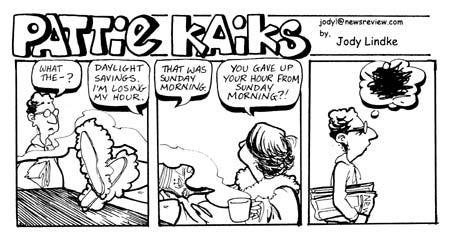

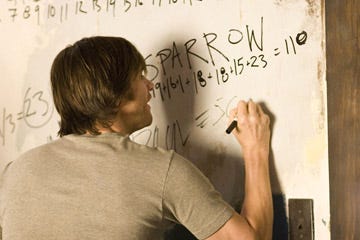
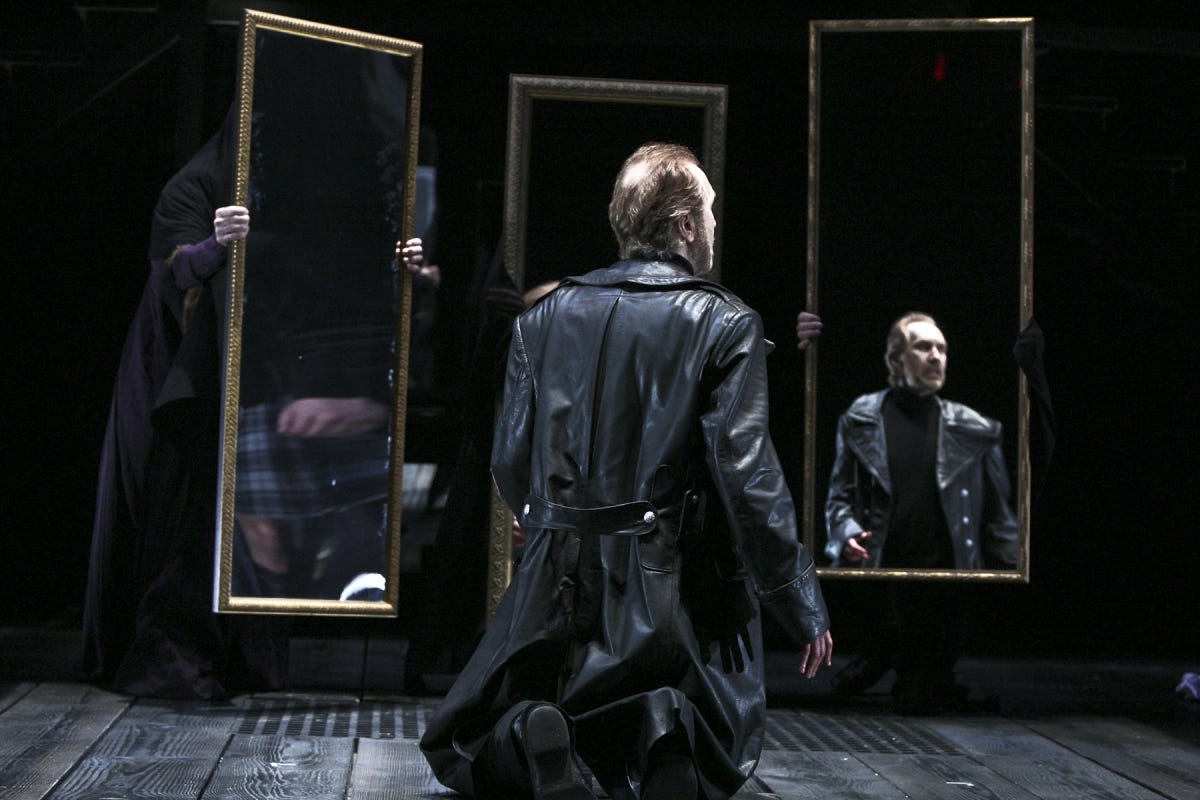


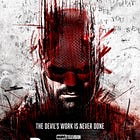







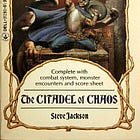





I'm not sure we can judge what the new Daredevil says about faith without seeing the whole story. Since this first half is pointedly about him losing his faith -- in the system, at least -- we'd expect it to be less prominent than next time. Without spoiling too much, there is a pretty key moment towards the end, in which he takes the punishment for someone else's sins.
Dude -this edition is packed full of great topics: DST, Fighting Fantasy, Gene Hackman, Strauss & Howe (The 4th Turning is here btw!), D&D bards ... You are so right. We have A LOT to talk about when we finally meet up!